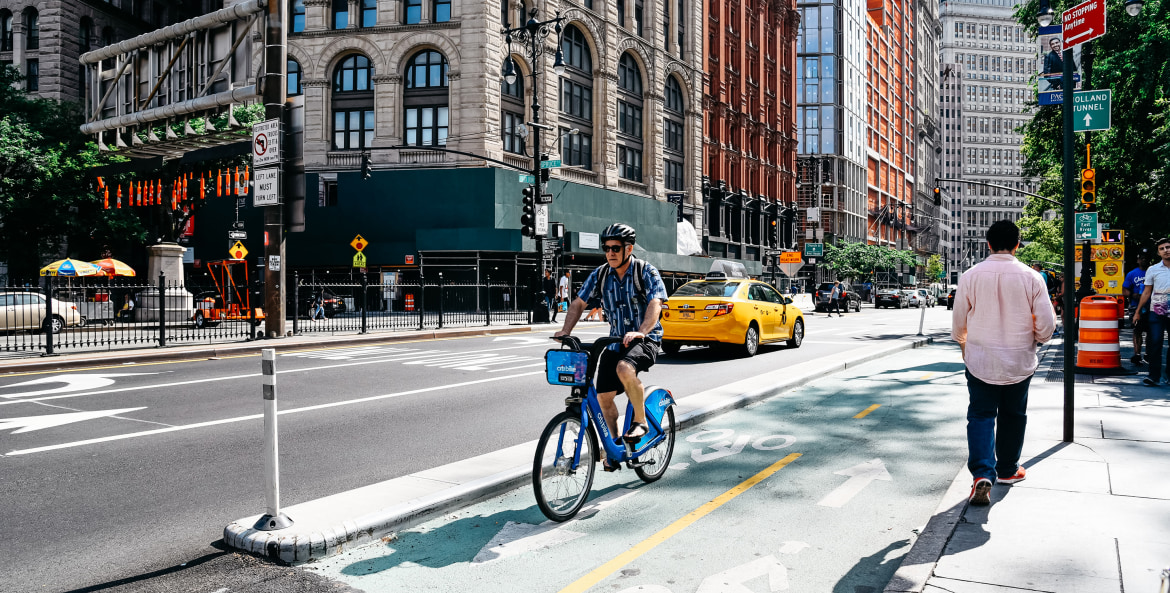Bicycles may be smaller and slower than cars, but the law entitles them to full use of the road. Coexistence requires added care from motorists, says AAA safety expert Rhonda Shah. “There are more than half a million collisions between cars and bikes in the United States every year, and many are the result of motorists’ failure to properly yield,” Shah says. Here are her suggestions for driving safely when cyclists are around.
Share the road.
It helps to think of bikes as slow-moving cars: They have the same rights to the road as other vehicles, including the right to occupy the whole lane when there isn’t enough room for a car and a bike to fit safely side by side. At intersections, drivers should yield to cyclists as they would for other motorists.
Give them at least three feet.
Nearly two-thirds of bicycle fatalities in the United States happen in places other than intersections. That’s a big reason why 32 states—including Arizona, California, Nevada, and Utah—require motorists to put at least a yard between their vehicles and bicyclists when passing, even if the cyclist is in a bike lane. If you’re driving over 25 MPH or the weather is bad, leave even more space. In Nevada, drivers are also required to change lanes when passing a person on a bike if there is more than one lane in the same direction.
Watch your blind spots.
Bicyclists can easily be overlooked. Double-check your mirrors when changing lanes and making turns, and before opening your door after parking. Don’t forget to use your signal before changing lanes or turning so people on bikes can anticipate your movements and ensure they aren’t in your blind spot.
Know the signs.
Many cyclists use hand signals to alert the traffic around them that they will soon turn, merge, or stop—know how to spot them so you can respond accordingly.
Lay off the horn.
Remember how loud it seemed the last time another driver honked at you? Imagine getting that blast right in your ear. Honking can startle bicyclists and make them swerve off the road or into traffic.
Focus on kids.
Children on bikes can be unpredictable because their motor skills and decision-making faculties aren’t fully developed. Take special care in places you’re most likely to encounter them—near schools and in residential areas—and be cautious when backing out of driveways.
Mind the lane.
Do not drive (even briefly to pass a stopped or turning vehicle), stop, or park in a marked bike lane. In California, drivers may enter the bike lane within 200 feet of an intersection when making a right turn—the solid white line will become a dashed white line when you can enter. Be certain to always double check that there are no bicyclists in the lane before you merge into it. Cyclists in the lane have the right of way. Allow them to safely pass before you merge into the bike lane.
Practice the Dutch Reach.
Drivers and passengers who open a door into a bike lane or road can cause a bicyclist to crash into it or dangerously swerve to avoid it. “Dooring”—as this is commonly called—can be deadly, but it’s easy to prevent. Before opening your vehicle’s door, first use the side mirror and look over your shoulder to check for cyclists. Then, practice the Dutch Reach: Open the door slowly with your far hand (your right hand if you are the driver) to ensure that you can easily see that the path is clear before exiting. Using the Dutch Reach can “help drivers open the door in a way that does not put cyclists at risk,” says William Van Tassel, manager of AAA Driver Training Programs.
Dial up the patience.
Cyclists can only move so quickly. If you have to pass one, wait until it’s safe, and don’t tailgate. “We all have places to go,” Shah says. “Regardless of our mode of transportation, if we slow down and respect one another we can all get there safely.”
